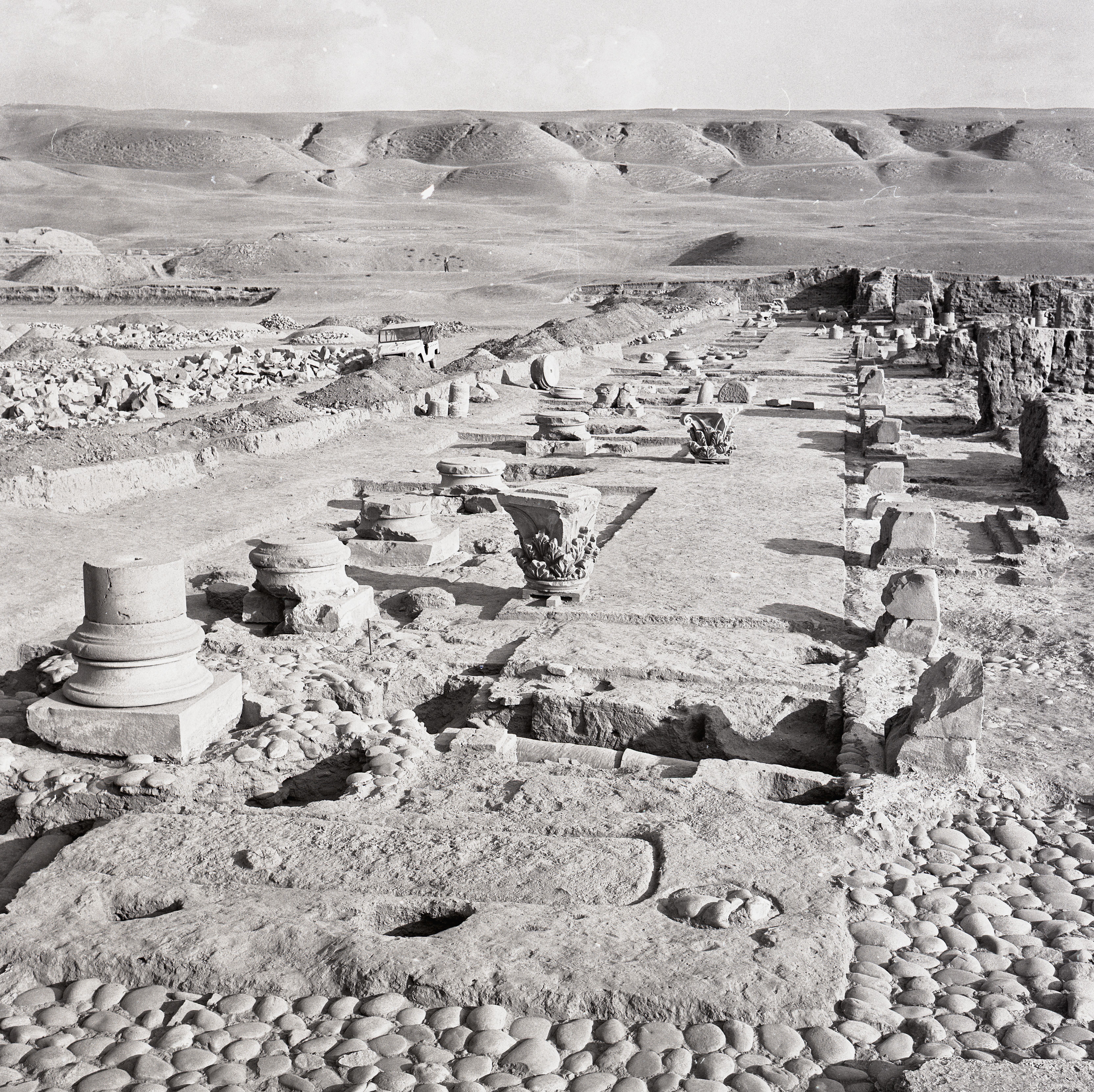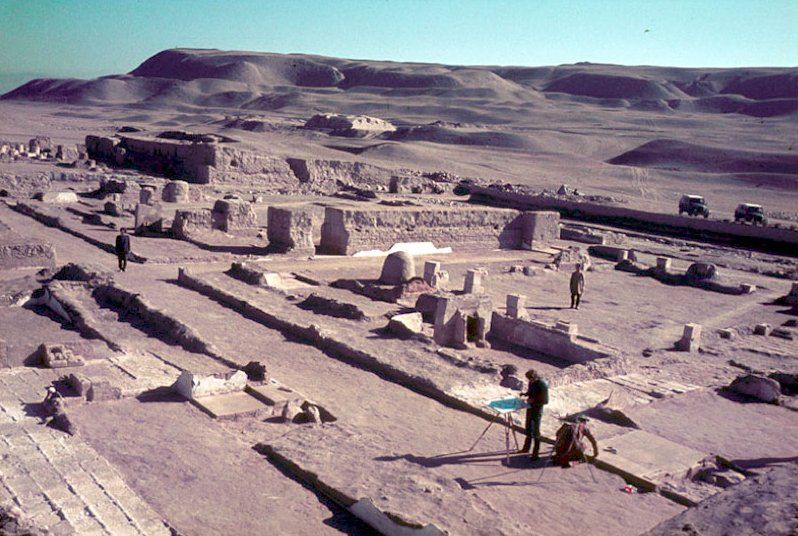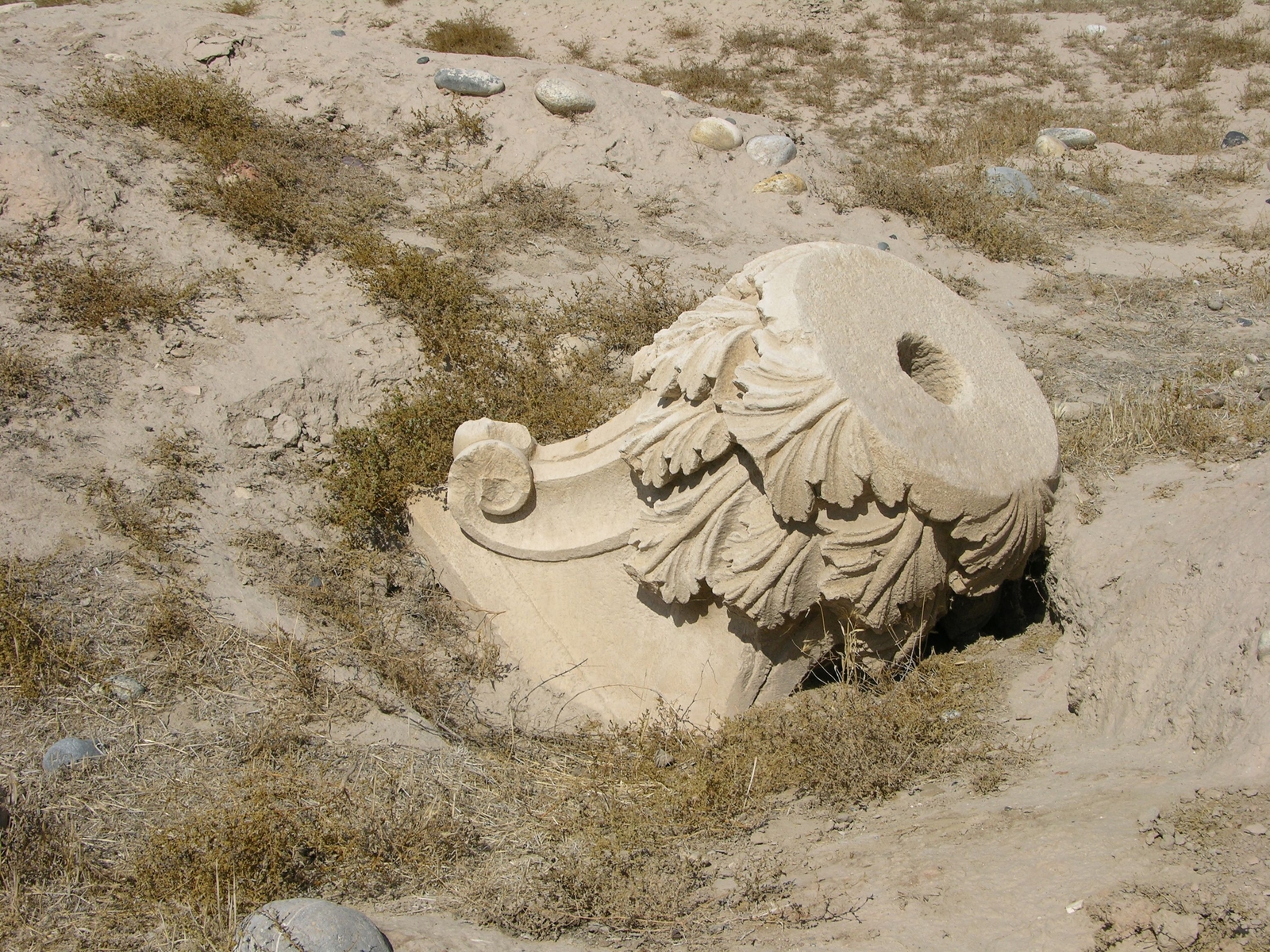Introduction: Uncovering a Forgotten Gem of the Ancient World
In the rugged, mountainous landscape of northern Afghanistan, a hidden treasure from the ancient world has captivated the imaginations of archaeologists and historians alike. This treasure is the lost city of Ai-Khanoum, a remarkable Hellenistic metropolis that once stood as a shining example of cultural fusion and exchange along the legendary Silk Road trade routes.

Founded in the wake of Alexander the Great’s conquests, Ai-Khanoum emerged as a strategic outpost established by Alexander’s general, Seleucus I Nicator. However, the city quickly grew into much more than a mere military stronghold. Ai-Khanoum’s prime location on the Silk Road attracted a diverse population, creating a vibrant melting pot of Greek, Bactrian, and other cultural influences. For centuries, this Hellenistic jewel thrived as a center of commerce, learning, and artistic expression, until it was ultimately abandoned and largely forgotten.
In this blog post, we will embark on a journey to uncover the fascinating history, remarkable architecture, and cultural legacy of the lost city of Ai-Khanoum. From its origins as an outpost of Alexander’s empire to its transformation into a cosmopolitan hub, we will explore the unique blend of Eastern and Western elements that defined this remarkable ancient city.
The Founding of Ai-Khanoum: A Strategic Outpost on the Silk Road
The story of Ai-Khanoum begins in the wake of Alexander the Great’s conquests in the late 4th century BCE. After his decisive victory over the Persian Achaemenid Empire, Alexander set his sights on expanding his influence eastward, establishing a series of settlements and colonies throughout the region.
One of these new foundations was the city of Ai-Khanoum, established by Alexander’s general, Seleucus I Nicator, in the years following the Macedonian ruler’s death. Seleucus recognized the strategic importance of the site, located at the confluence of the Kokcha and Amu Darya rivers in what is now northern Afghanistan.

The city’s prime location along the Silk Road trade routes made it an ideal outpost for controlling and facilitating the flow of goods, people, and ideas between the Mediterranean world and the East. Ai-Khanoum was situated at a crucial crossroads, linking the Hellenistic kingdoms of the West with the ancient civilizations of Central Asia, India, and China.
As the Seleucid Empire consolidated its control over the region, Ai-Khanoum evolved from a simple military garrison into a thriving urban center. The city’s strategic location, coupled with the influx of Greek settlers, artisans, and merchants, transformed Ai-Khanoum into a vibrant hub of cultural exchange and economic activity.
The Cosmopolitan Character of Ai-Khanoum
One of the most remarkable aspects of Ai-Khanoum was its cosmopolitan character, which was a reflection of the diverse population that called the city home. As a result of its position along the Silk Road, Ai-Khanoum attracted settlers and visitors from a wide range of cultural backgrounds, creating a unique blend of Eastern and Western influences.
At the heart of Ai-Khanoum’s cultural diversity were the Greek colonists who had been transplanted to the region following Alexander’s conquests. These settlers brought with them the architectural styles, religious practices, and artistic traditions of the Hellenistic world, which were then adapted and integrated with local Bactrian and Central Asian elements.

The city’s urban layout, for example, followed a distinctly Hellenistic grid pattern, with broad, straight streets and a well-planned infrastructure. Archaeologists have also uncovered numerous Greco-Roman-style buildings, including a grand gymnasium, a theater, and a monumental temple complex dedicated to the Greek gods.
However, Ai-Khanoum was not simply a Greek enclave transplanted to the East. The city’s population also included a significant number of Bactrian and Central Asian inhabitants, who brought their own cultural traditions and influences to the urban landscape. This melding of Greek and local elements can be seen in the city’s religious practices, which incorporated both Hellenistic deities and indigenous Central Asian gods and goddesses.
The diverse population of Ai-Khanoum is also reflected in the city’s material culture, which includes a rich trove of artifacts and artworks that showcase the blending of artistic styles and techniques. From intricate stone carvings and bronze sculptures to exquisite pottery and metalwork, the artifacts found at Ai-Khanoum demonstrate the city’s role as a hub of cultural exchange and creative expression.
The Architectural Wonders of Ai-Khanoum
One of the most striking aspects of Ai-Khanoum’s legacy is the remarkable architecture that has been uncovered by archaeologists. The city’s urban planning and monumental buildings provide a glimpse into the architectural sophistication and engineering prowess of its inhabitants.
At the heart of Ai-Khanoum’s architectural marvels is the city’s grand citadel, a massive fortified complex that served as the administrative and religious center of the city. The citadel’s impressive scale and grandeur are a testament to the wealth, power, and ambition of Ai-Khanoum’s ruling elite.

Within the citadel, archaeologists have discovered a series of remarkable structures, including a colossal temple complex dedicated to the Greek gods. This temple, which features a monumental staircase and a massive stone altar, would have been a dominant feature of the city’s skyline, visible from afar and serving as a symbol of Ai-Khanoum’s Hellenistic heritage.
Another architectural highlight of Ai-Khanoum is the city’s gymnasium, a sprawling complex that would have served as a hub of athletic, educational, and social activities. The gymnasium’s design, with its porticoes, courtyards, and specialized facilities, closely resembles the gymnasia found in the Hellenistic cities of the Mediterranean world.
Alongside these grand public buildings, Ai-Khanoum also boasted a well-planned residential area, with neatly organized streets and houses that reflect the city’s commitment to urban planning and infrastructure. The remains of these homes and neighborhoods provide valuable insights into the daily lives and material culture of Ai-Khanoum’s inhabitants.
The architectural legacy of Ai-Khanoum is a testament to the city’s status as a center of Hellenistic culture and learning in Central Asia. The fusion of Greek and local building styles and techniques, as well as the sheer scale and grandeur of the city’s monuments, have captivated archaeologists and historians alike, offering a glimpse into the remarkable achievements of this long-lost ancient metropolis.
The Decline and Abandonment of Ai-Khanoum
Despite its centuries-long prosperity and cultural prominence, the city of Ai-Khanoum ultimately met a tragic end, falling into decline and abandonment in the 2nd century BCE. The exact reasons for the city’s demise are still debated by scholars, but a combination of factors likely contributed to its downfall.
One of the primary factors was the political instability and upheaval that swept across the region in the centuries following the collapse of the Seleucid Empire. As various Central Asian nomadic groups, such as the Yuezhi and Kushans, vied for control of the Bactrian region, Ai-Khanoum found itself caught in the crosshairs of these power struggles.

The city’s strategic location, which had once been its greatest asset, now made it a prime target for invaders and raiders. Repeated attacks and sieges likely took a heavy toll on Ai-Khanoum’s infrastructure and population, eventually leading to its abandonment.
Additionally, shifts in regional trade patterns and the gradual decline of the Silk Road may have contributed to Ai-Khanoum’s demise. As new trade routes and commercial centers emerged, the city’s importance as a hub of economic activity may have waned, leading to a gradual decline in prosperity and population.
By the 2nd century BCE, Ai-Khanoum had been largely abandoned, its grand monuments and buildings left to the ravages of time and the elements. The city’s fate remained largely unknown for centuries, until it was rediscovered by Soviet and Afghan archaeologists in the 1960s, who began the painstaking process of uncovering its remarkable history and legacy.
The Legacy of Ai-Khanoum: A Shining Example of Cultural Fusion
Despite its tragic demise, the legacy of Ai-Khanoum continues to captivate and inspire scholars and the public alike. As one of the most significant Hellenistic settlements in Central Asia, the city stands as a testament to the remarkable cultural fusion and exchange that took place along the Silk Road.
The architectural and artistic wonders of Ai-Khanoum, from its grand temples and gymnasia to its intricate stone carvings and metalwork, offer a glimpse into the remarkable achievements of its inhabitants. The city’s role as a center of learning and intellectual discourse is also evident in the numerous educational and cultural institutions that have been uncovered by archaeologists.

Perhaps most importantly, Ai-Khanoum serves as a powerful symbol of the interconnectedness of the ancient world. As a hub of cultural exchange and trade, the city facilitated the flow of ideas, technologies, and artistic traditions between the Hellenistic world and the civilizations of the East. This cross-pollination of cultures is reflected in the city’s unique blend of Greek and Central Asian elements, which continues to fascinate and inspire scholars and the public alike.
Today, the legacy of Ai-Khanoum serves as a reminder of the remarkable achievements and cultural diversity of the ancient world. As we continue to uncover and study the secrets of this long-lost city, we gain a deeper understanding of the complex and interconnected histories that have shaped our world. The story of Ai-Khanoum is a testament to the power of cultural exchange and the enduring human spirit, and it will undoubtedly continue to captivate and inspire for generations to come.
Conclusion: Rediscovering the Jewel of the Silk Road
The lost city of Ai-Khanoum stands as a remarkable and captivating remnant of the ancient world. From its origins as a strategic outpost established by Alexander the Great’s general, to its transformation into a thriving, cosmopolitan hub of cultural exchange, the story of Ai-Khanoum is one of remarkable achievement, ingenuity, and resilience.
Through the ongoing efforts of archaeologists and historians, the secrets of this long-forgotten city continue to be uncovered, shedding light on the remarkable blending of Hellenistic and Central Asian cultures that defined its character. The architectural wonders, artistic treasures, and educational institutions of Ai-Khanoum serve as a testament to the city’s status as a center of learning, commerce, and cultural innovation.
As we delve deeper into the history and legacy of Ai-Khanoum, we are reminded of the interconnectedness of the ancient world and the remarkable achievements that were possible through the exchange of ideas, technologies, and artistic traditions. The story of this lost city is a powerful reminder of the enduring human spirit and the remarkable cultural diversity that has shaped our world.
Through continued research and exploration, the jewel of the Silk Road that was Ai-Khanoum will continue to captivate and inspire, offering us a window into the rich and complex tapestry of the ancient world. As we uncover the secrets of this long-lost city, we gain a deeper appreciation for the remarkable accomplishments of our ancestors and the enduring legacy of cultural exchange.

